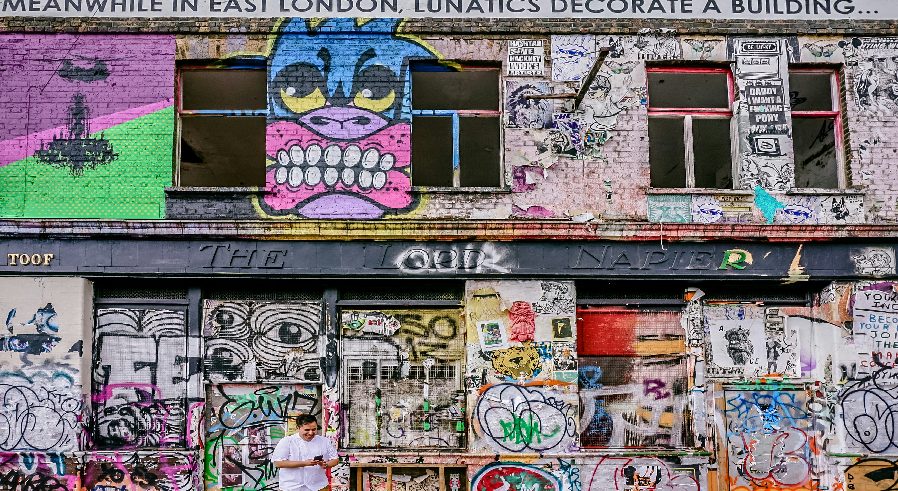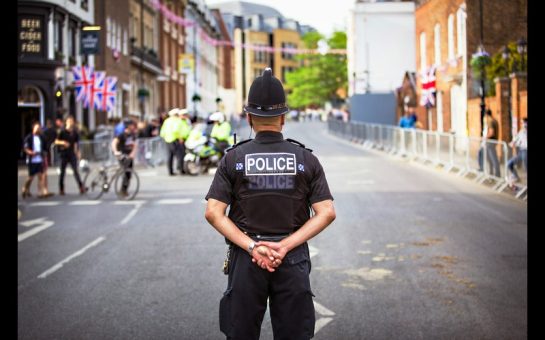London councils have spent tens of millions of pounds cleaning increasing amounts of graffiti since 2018.
Reports of graffiti have risen across London boroughs every year since 2020, costing councils up to half a million pounds each, a Freedom of Information request has revealed.
An “anti-graffiti economy” has seen the cost of removing the illegal artwork balloon, according to one expert, even as councils run graffiti workshops and street art exhibitions have grown in popularity.
Data from 12 out of 33 councils suggests that London authorities spent between £20-30 million removing graffiti in the last five years.
Southwark Council lost the most money to graffiti, forking out more than £500,000 a year to get rid of the illegal paintwork, with Camden the second highest at more than £300,000.
While almost all boroughs are spending more, Enfield and Ealing report only marginally higher spending than 2018 levels, and Bromley has decreased in this period.
Reports of graffiti increased 15% from 2022-2023, significantly greater than the less than 5% rise in the two previous years, data from 18 out of 33 councils shows.
The numbers of reports for 2023 was made available by 25 out of 33 authorities, with only Croydon, Harrow, Hammersmith, Haringey, Havering, Newham and Waltham Forest failing to respond at all to a Freedom of Information request.
The most affected boroughs have broadly spent the most on removing the vandalism.
Camden recorded the highest graffiti levels in 2023, with Westminster, Greenwich and Lewisham not far behind.
In Greenwich, cleaning costs rose by a fifth in two years, while Westminster Council racked up a bill of over a quarter of a million in 2023.
The total amount that graffiti costs the capital is not captured by just council figures.
Transport for London estimated in 2023 that the company loses “millions” to keep their trains and stations graffiti free every year.
Dr Rafael Schacter, associate professor at UCL and author of four books on graffiti including the recently released Monumental Graffiti, believes that costs have ballooned in recent years due to a widespread privatisation of infrastructure and services which has lead to a self-sustaining “anti-graffiti economy”.
He said: “Anti-graffiti is a huge multi-billion-pound business now which is working in symbiosis with graffiti in that they need it to survive.
“For example, the cost of cleaning graffiti on the train system has increased hugely since privatisation.
“The cost per square meter to clean graffiti has gone up up ten or twentyfold above inflation.”
Counter-intuitively, there is not a strong correlation between the amount councils spent on graffiti compared to the numbers of reports they receive.
There are many instances where a significant dip in reports is not reflected by a corresponding reduction in money spent.
Dr Schacter argues that this inflation of costs directly impacts the severity of the sentences handed to illegal artists, as the cost of removal is often used to determine punishment.
Most London councils deliver on-the-spot Fixed Penalty Notice fines of between £80-£200 for a graffiti offence.
If damage is deemed to exceed £5,000, the offender can face up to ten years in prison.
The strict laws, harsh sentences and expanding recourses devoted to stamping out graffiti are evolving alongside a more mainstream culture of street art.
Londoners can now attend council-run graffiti workshops, street art exhibitions and popular graffiti hotspots such as Brick Lane and Leake Street.
The graffiti community, however, maintains a distinction between the type ‘sanitised’ art popularised in the mainstream, often called street art, a more hardcore practice of ‘tagging’.
Dr Schacter said: “Street art first emerged out of graffiti and at its genesis included lots of different types of interventions in the city based on a similar ethic to graffiti but more visually accessible.”
This contrasts to the text-based ‘tagging’ where an artist ‘throws up’ their name or ‘tag’ on a surface.
Dr Schacter argued that today street has become increasingly “corporatised and appropriated.”
He said: “Street art with a capital S and A is a kind of institutionalised form of public art with a more edgy aesthetic that is almost always entirely superficial.”
This contrasts to tagging, which exists within a closed community where art holds a less accessible, esoteric meaning not sanitised for public consumption.

The challenge to reduce this kind of graffiti is therefore compounded by the fact that the art is inherently anti-establishment.
Street artist Shauna Anseo, 33, who paints wall murals and often works alongside the graffiti community, explained that there will always be an element of rebellion to the practice.
According to Shauna, artists gain ‘street-cred’ by getting their personal tag in the most hard-to-reach locations.
Shauna said: “If you hit (graffiti) a train, and the train then goes through a station, that’s considered gold dust, it’s amazing, it’s a really big deal.
“There’s an element of that will never go away.”
This desire to tag the most difficult surfaces can often be dangerous work.
Three graffiti artists, including one teenager, were killed by a train while spraying on the tracks in South London in 2018.
To reduce illegal tagging, Shauna suggested increasing the number of ‘legal walls’, where graffiti is allowed.
However, both Shauna and Dr Schacter agreed that people would have to go on living with graffiti, as, despite efforts to stop it, and perhaps because of them, the practice is not going anywhere soon.
Shauna said: “It’s the same as any sort of rebellion isn’t it?
“It’s not violent, they’re not drug dealing, they’re just scribbling on stuff.”





Join the discussion